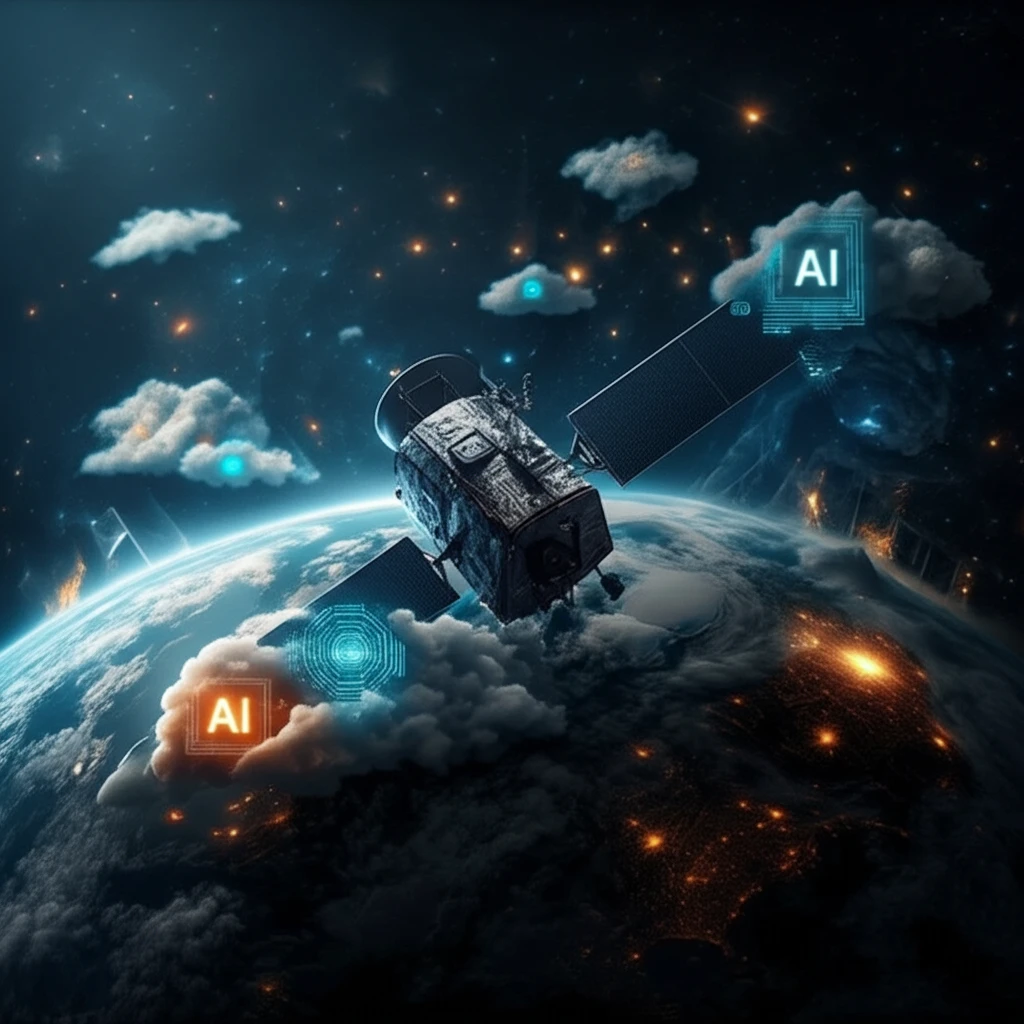
Unlock Earth's Secrets: How AI Cloud Detection is Revolutionizing Satellite Imagery
"From Landsat-8 to Proba-V: Transfer learning breakthroughs in satellite cloud screening for a clearer view of our planet"
Imagine trying to understand what's happening on Earth from space, but your view is constantly obscured by clouds. This is the challenge faced by scientists and researchers who rely on satellite images to monitor our planet. Cloud cover makes it difficult to gather accurate data, hindering efforts to track deforestation, monitor urban growth, and study climate change.
Traditional methods of cloud detection often struggle, especially with satellites that have fewer spectral bands—the specific ranges of light they can 'see.' Proba-V, a European Space Agency satellite, faces this challenge. Its limited spectral information makes it tough to distinguish clouds from other features on the ground, leading to less reliable data.
But what if we could teach computers to 'see' clouds more accurately, even with limited information? That's where artificial intelligence (AI) comes in. Recent research explores how convolutional neural networks (CNNs), a type of AI, can be trained to identify clouds using data from other satellites, like Landsat-8, and then apply that knowledge to Proba-V images.
AI Cloud Detection: Smarter Satellite Imagery

Convolutional neural networks (CNNs) have revolutionized image recognition, and their application to cloud detection is no exception. CNNs excel at identifying patterns and spatial relationships within images, making them ideal for distinguishing clouds from land, water, and other atmospheric phenomena. Unlike traditional threshold-based methods, which often struggle with complex or varying conditions, CNNs can learn to adapt and generalize, leading to more accurate results.
- Landsat-8 to the Rescue: Researchers use the Landsat-8 satellite, which has more detailed spectral information and a comprehensive cloud mask dataset, to train CNNs.
- Adapting the View: They then adapt the Landsat-8 data to mimic the characteristics of Proba-V images, bridging the gap between the two datasets.
- Transfer Learning Magic: The CNN, trained on Landsat-8 data, is then applied to Proba-V images, effectively transferring its knowledge to the new task.
A Clearer Future for Earth Observation
AI-powered cloud detection is paving the way for more accurate and reliable Earth observation. By leveraging transfer learning techniques, researchers are overcoming the limitations of traditional methods and unlocking the full potential of satellite imagery. This has implications for climate monitoring, environmental protection, and a deeper understanding of our changing planet. As AI technology continues to advance, we can expect even more sophisticated and effective solutions for cloud detection, providing us with a clearer view of Earth's secrets.
